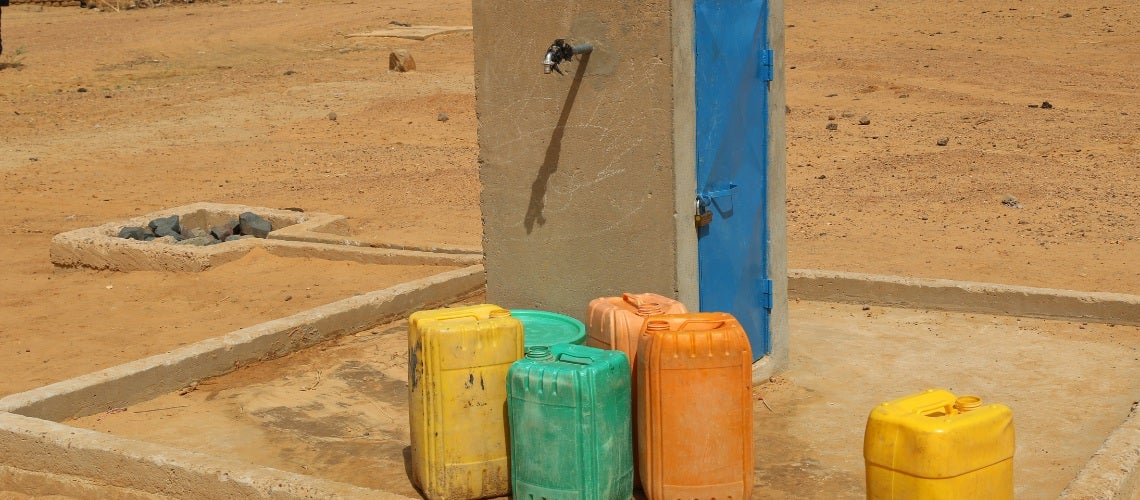 Water supply
Water supply
Globally, 2 billion people lack access to safely managed drinking water services and 3.6 billion lack access to safely managed sanitation services. At the current pace, we are unlikely to achieve Sustainable Development Goal 6: ensuring the availability and sustainable management of water and sanitation for all by 2030. Combined with population growth, urbanization, and climate change, most water resources are facing unprecedented pressure. To combat these trends, important changes are urgently needed in the water sector.
Governments and water utilities are increasingly promoting water use efficiency, water conservation and water reuse, using a range of instruments aimed at promoting efficient water allocation and use, while building resilience and adaptation to climate change. However, the price of water and sanitation services rarely reflects the costs of treatment and distribution.
Historically, the water sector has operated under the assumption that tariffs should be designed to achieve full economic cost recovery. Faced with the added challenge of ensuring affordable access, this leaves many water utilities in low-income economies chronically underfunded. More must be done to enable utilities to recover the costs of service delivery while preserving water resources.
Recent research by the World Bank’s Water Global Practice explores how tariffs are essential—but not the only pathway—to cost recovery and water security. To maximize their potential and address affordability, tariffs must be well designed, complemented by appropriate instruments, adequately regulated, and understood by customers.
We’ve proposed a series of considerations that can help policy makers and utilities move from a narrative that equates tariffs with full economic cost recovery to one that recognizes the roles of taxes and transfers in achieving financial equilibrium while helping conserve our water resources.
-
Effective Tariffs are a Function of Economic Efficiency
Economic efficiency is essential for water utilities and can reduce reliance on direct and indirect subsidies. This is especially important during times of crisis, such as the COVID-19 pandemic and post-pandemic recovery period, when revenues collected through taxes and transfers are likely to be directed elsewhere. Inefficiency affects cost recovery directly through low bill collection and high costs, and also indirectly through reduced willingness to pay resulting from poor-quality services, which can hamstring a utility’s ability to deliver quality services in the future.
-
Tariff Design Must Carefully Consider Competing Policy Objectives
Traditionally, tariff design has aimed at reflecting the costs of provision thereby giving a signal to users about the true cost of the resource and the service, and in so doing, providing incentives for conservation. However, concepts of cost recovery and efficiency are not always compatible with rights-based approaches that emphasize affordability and fairness. As such, tariff design is a demanding yet delicate balancing act that is highly context specific.
-
Tariff Complements Can Help Address Affordability, Water Consumption, and service quality
The need for a policy tool for each policy objective limits the ability of water tariffs to efficiently meet financial viability, affordability, and consumption targets simultaneously. By using complementary policies alongside core tariff structures, policymakers can ensure sustainable funding for quality services while meeting affordability and consumption targets. For example, if tariffs are set at economic cost-recovery levels, then well-targeted subsidy mechanisms such as tariff rebates or vouchers can provide access to poor households. Additionally, seasonal pricing (or overconsumption penalties) can be used to incentivize water conservation and promote the sustainable use of resources in water-stressed countries.
-
Regulation Can Increase Efficiency and Ensure Good Governance
Regulation is critical in the water sector, where economies of scale and high start-up costs are fertile ground for natural monopolies. Regulators, therefore, need to prevent the abuse of power by monopolistic utilities. Theoretically, regulation can also help prevent inflated prices and costs, maintain standards and quality of services provided, and avoid persistent failures to address water conservation through, for example, education and water use restrictions. A number of World Bank publications describe how there is no “one-size-fits-all” solution for the regulation of water and sanitation services and regulatory arrangements should be tailored to meet the specific needs of the country.
-
Strong Leadership, Improved Service Quality, and Increased Stakeholder Engagement Can Reduce Resistance to Tariff Reform
Farsighted leaders can use events such as a health epidemic or the increasing impacts of climate change to create momentum and build alliances that can lead to a successful tariff reform process. Tariff reform requires a strategy that fosters support from customers and other stakeholders , and should generally entail: (1) strong political leadership; (2) enhanced performance that results in a service quality that is acceptable to customers; (3) increased stakeholder engagement; and (4) widely socializing the tariff design process and underlying costs of provision.
-
New and innovative technologies can support tariff design and lead to improved efficiencies
Water utilities have been slow to adopt new technologies that can improve economic efficiency such as mobile payments that provide more flexible payment options, reduce transaction costs, and improve transparency. Prepayment meters for large institutions also facilitate customer demand management and reduce the debt risk for utilities. Smart metering reduces water losses and theft, and promotes water conservation. Coupling the introduction of more sophisticated tariff structures, such as dynamic pricing, with smart meters, can support customers to efficiently manage their demand, thereby reducing the costs imposed on the system as well as consumption.
Climate change demands new approaches to water and sanitation service delivery, including shifting away from the traditional narrative that relies only on tariffs for financial recovery and water conservation. By adopting a holistic approach that incorporates economic efficiency, policy objectives, tariff complements, regulation, stakeholder engagement, and innovative technologies, we can work towards a more sustainable, resilient, and water-secure future for all.




Join the Conversation